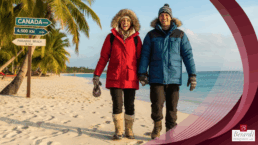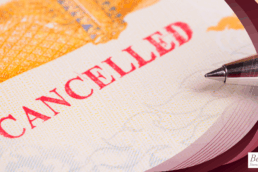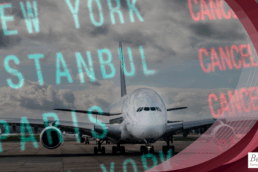Every year, thousands of Canadian snowbirds head south to enjoy the warmer climate of the United States. Whether it’s Florida, Arizona, or California, the appeal of escaping harsh winters is undeniable. But with increased scrutiny at the border and evolving immigration policies, it’s essential to understand the rules surrounding the B-2 visitor status.
At Berardi Immigration Law, we receive countless inquiries from Canadians asking: “How long can I stay in the U.S.?” “Do I need a visa?” “What paperwork is required?” This blog answers the most frequently asked questions and offers practical guidance to help you travel confidently and legally.
How Long Can I Stay in the U.S. as a Canadian Visitor?
Canadian citizens entering the U.S. for tourism are typically admitted under the B-2 visitor status. Most are granted a stay of up to six months per entry. However, this is not a guaranteed duration, it’s at the discretion of the Customs and Border Protection (CBP) officer at the port of entry.
There’s no strict annual limit in U.S. immigration law, meaning you could theoretically make multiple trips. But if your total time in the U.S. approaches or exceeds six months in a calendar year, expect increased scrutiny. Always check your I-94 record online and ensure you depart before your authorized stay expires.
“We get tons of inquiries about how long Canadian citizens can remain in the U.S.,” says Rosanna Berardi, Esq., Managing Partner at Berardi Immigration Law. “It’s critical to understand that while six months is common, it’s not automatic. CBP officers look at your travel history, ties to Canada, and intent. Overstaying or frequent long visits can raise red flags.”
Do I Need a Visa or Paperwork Before Traveling?
Canadian citizens do not need a visa to enter the U.S. for tourism. However, starting in 2025, a new rule requires additional steps for longer stays:
- If you plan to stay over 30 days, you must either:
- Request a Form I-94 at the border, or
- Complete an online registration within 30 days of entry.
This change aims to improve tracking and compliance for longer-term visitors. If you’re unsure whether you received an I-94, check the CBP website after entry. If no record appears, you may need to file a G-325R registration form.
What Should I Say to the Border Officer?
Be honest and succinct. Explain your purpose (e.g., “I’m wintering in Florida”), your approximate length of stay, and be prepared to show:
- Proof of Canadian ties (e.g., home ownership, employment, family)
- U.S. accommodations (e.g., rental agreement)
- Financial resources to support your stay
Short turnarounds between visits, such as returning to Canada for a few days and re-entering, can trigger scrutiny. Aim to spend as much time in Canada as you do in the U.S. between extended visits.
Can I Stay Longer Than Six Months?
If you need to stay longer than your authorized period, you must file a Form I-539 with U.S. Citizenship and Immigration Services (USCIS) before your stay expires. Alternatively, you can return to Canada and re-enter later, but this is subject to CBP discretion.
Can I Work or Volunteer While Snowbirding?
Employment in the U.S. under B-2 status is strictly prohibited. Avoid anything that resembles U.S.-based employment, including volunteering for U.S. organizations, even if the work is unpaid.
Will I Lose My Canadian Health Care Coverage?
Each province has its own rules about how long you can be absent and still maintain health coverage. For example, Ontario allows up to 212 days outside the province in a calendar year. Be sure to check with your provincial health ministry and purchase travel insurance for U.S. medical care.
Do I Have to Pay U.S. Income Tax?
You may be subject to U.S. tax if you meet the Substantial Presence Test (SPT). Many snowbirds avoid this by filing Form 8840, which claims a “closer connection” to Canada. Consult a cross-border tax advisor to ensure compliance.
What Happens If I’m Denied Entry?
If denied entry at the border, you must return to Canada immediately. The refusal goes on your record and may affect future entries and your NEXUS membership. Prepare better documentation and allow more time between visits before trying again.
“Being denied entry is serious,” says Jennifer Behm, Esq., Partner at Berardi Immigration Law. “It’s not just a one-time inconvenience, it can impact your travel privileges for years. Always be prepared and honest at the border.”
Canadian Snowbird FAQs
How soon can I return to the U.S. after going back to Canada?
There’s no fixed wait time, but short turnarounds raise scrutiny. Aim for balance. Spend as much time in Canada as you do in the U.S. between long visits.
What if I didn’t get an I-94 at entry?
If you plan to stay over 30 days and didn’t receive an I-94, file the G-325R registration form within 30 days of arrival. Always check the I-94 website first.
Can I use a friend’s address for the G-325R?
Yes. If you’re traveling by RV or moving around, list the U.S. address of someone who can receive mail on your behalf.
Don’t Get Left Out in The Cold With Snowbird Rules
Canadian snowbirds enjoy a unique privilege: Visa-free travel to the U.S. for extended stays. But with privilege comes responsibility. Understanding the B-2 visitor rules, staying within authorized limits, and keeping accurate records are essential to maintaining smooth travel experiences.
At Berardi Immigration Law, we’re here to help you navigate these rules with confidence. Whether you’re planning your first winter escape or are a seasoned snowbird, our team offers trusted legal guidance tailored to your needs. Click here to schedule your consultation online today, or contact us for any immigration assistance you may need. Stay warm, and compliant, this snowbird season!
Ready to have Berardi on your side?
Whether you’re a business looking to hire or a professional hoping to relocate, immigration law can be complicated. But you don’t have to do it alone. Put our experience to work for you.



